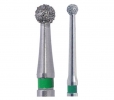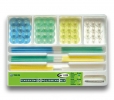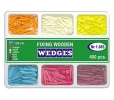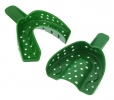PURPOSE
The purpose of this study was to assess the effect of systemically administered oxytocin (OT) on the implant-bone interface by using histomorphometric analysis and the removal torque test.
MATERIALS AND METHODS
A total of 10 adult, New Zealand white, female rabbits were used in this experiment. We placed 2 implants (CSM;CSM Implant, Daegu, South Korea) in each distal femoral metaphysis on both the right and left sides; the implants on both sides were placed 10 mm apart. In each rabbit, 1 implant was prepared for histomorphometric analysis and the other 3 were prepared for the removal torque test (RT). The animals received intramuscular injections of either saline (control group; 0.15 M NaCl) or OT (experimental group; 200 µg/rabbit). The injections were initiated on Day 3 following the implant surgery and were continued for 4 subsequent weeks; the injections were administered twice per day (at a 12-h interval), for 2 days per week.
RESULTS
While no statistically significant difference was observed between the two groups (P=.787), the control group had stronger removal torque values. The serum OT concentration (ELISA value) was higher in the OT-treated group, although no statistically significant difference was found. Further, the histomorphometric parameter (bone-toimplant contact [BIC], inter-thread bone, and peri-implant bone) values were higher in the experimental group, but the differences were not significant.
CONCLUSION
We postulate that OT supplementation via intramuscular injection weakly contributes to the bone response at the implant-bone interface in rabbits. Therefore, higher concentrations or more frequent administration of OT may be required for a greater bone response to theimplant. Further studies analyzing these aspects are needed.
Source:PMID: 25551011 PubMed PMCID: PMC4279050




